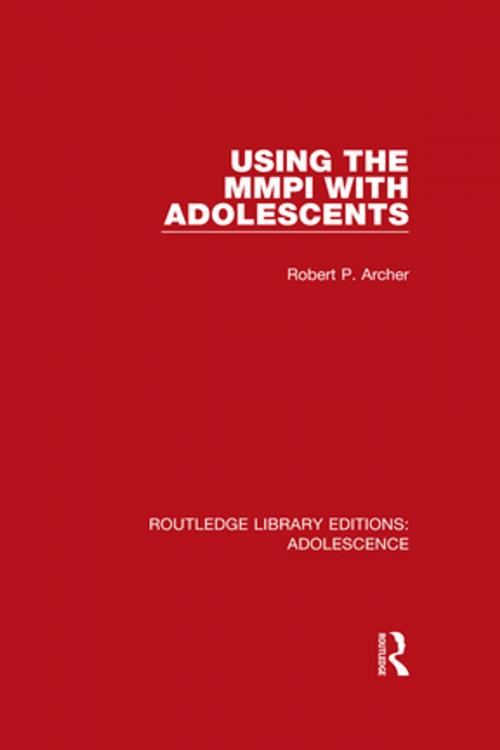Using the MMPI with Adolescents
Nonfiction, Health & Well Being, Psychology, Child & Adolescent, Adolescent Psychology, Clinical Psychology, Personality| Author: | Robert P. Archer | ISBN: | 9781317359500 |
| Publisher: | Taylor and Francis | Publication: | December 22, 2015 |
| Imprint: | Routledge | Language: | English |
| Author: | Robert P. Archer |
| ISBN: | 9781317359500 |
| Publisher: | Taylor and Francis |
| Publication: | December 22, 2015 |
| Imprint: | Routledge |
| Language: | English |
Originally published in 1987, the objective of this volume was to provide a clear and comprehensive review of the literature in the area of adolescents and the MMPI based on the research studies that had occurred in the previous 40 years. It was written to provide the reader with an appreciation and understanding of the research that had occurred, as well as to highlight areas in which crucial research had essentially not occurred, such as systematic and ongoing investigations of the accuracy of clinical descriptive statements for adolescents based on adolescent and adult correlate data. The volume also attempts to provide a developmental perspective through which to understand adolescent response patterns as well as a clear discussion of the empirical implications of using adult and adolescent norm conversions for adolescent respondents. A series of direct, concrete recommendations are offered for the scoring and interpretation of adolescent response patterns, along with the empirical foundations on which these suggestions are based. Finally, this book provides a description of norm development projects at the time and future research directions.
Originally published in 1987, the objective of this volume was to provide a clear and comprehensive review of the literature in the area of adolescents and the MMPI based on the research studies that had occurred in the previous 40 years. It was written to provide the reader with an appreciation and understanding of the research that had occurred, as well as to highlight areas in which crucial research had essentially not occurred, such as systematic and ongoing investigations of the accuracy of clinical descriptive statements for adolescents based on adolescent and adult correlate data. The volume also attempts to provide a developmental perspective through which to understand adolescent response patterns as well as a clear discussion of the empirical implications of using adult and adolescent norm conversions for adolescent respondents. A series of direct, concrete recommendations are offered for the scoring and interpretation of adolescent response patterns, along with the empirical foundations on which these suggestions are based. Finally, this book provides a description of norm development projects at the time and future research directions.















